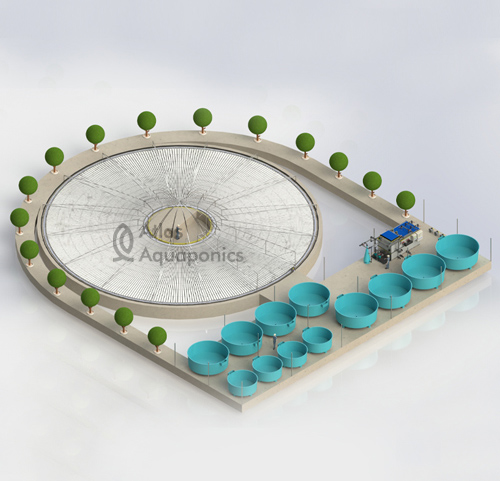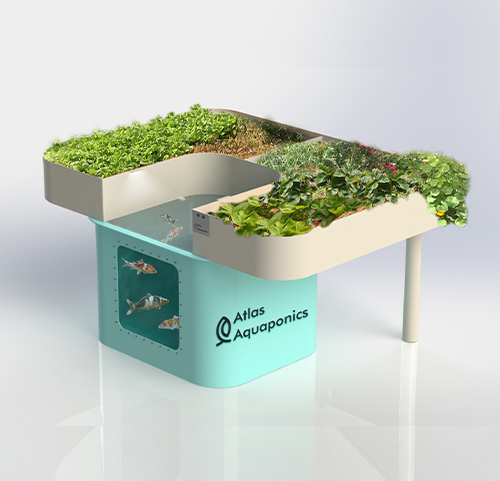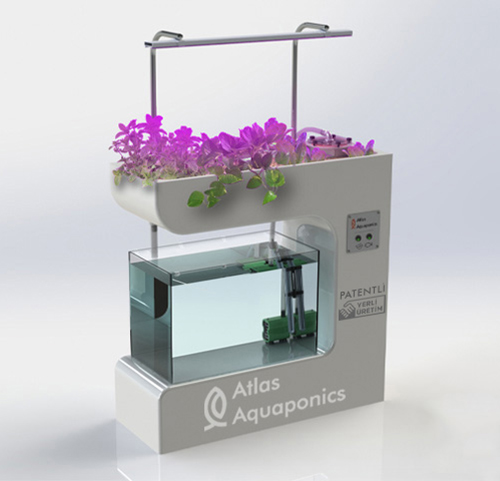Ideal Plants for Aquaponic Systems: Vegetables, Herbs, and Fruits
Aquaponics is a revolutionary method of sustainable farming that integrates aquaculture (raising fish) with hydroponics (growing plants without soil). This closed-loop ecosystem allows plants to absorb essential nutrients from fish waste, while the plants help purify the water for the fish. Choosing the right plants for your aquaponic system is crucial for maximizing productivity, maintaining system balance, and ensuring a bountiful harvest. In this guide, we’ll explore the best vegetables, herbs, and fruits for aquaponics, along with key factors to consider when selecting plants.

Why Plant Selection Matters in Aquaponics
Selecting the ideal plants for your aquaponic system is about more than just preference; it directly affects your system’s efficiency and success. Some plants thrive better in aquaponic environments due to their adaptability to nutrient-rich water, pH balance, and temperature conditions. The right plant choices will ensure healthy growth, maximize yield, and maintain a harmonious ecosystem. Let’s dive into the critical factors that determine where to set up your aquaponic system. Key factors to consider when selecting plants include:
- Water pH Levels: Most plants prefer a pH range between 6.5-7.0, which aligns with the optimal range for fish.
- Nutrient Requirements: Different plants have different nutrient demands; balancing fish waste production with plant nutrient absorption is key.
- Temperature Tolerance: Ensure the plants you choose match the climate and water temperatures maintained in your system.
- Growth Rate: Some plants grow faster and are more suited to aquaponics due to their ability to absorb nutrients efficiently.
Now, let’s dive into the best vegetables, herbs, and fruits for your aquaponic garden!
Best Vegetables for Aquaponics
Vegetables are among the most commonly grown plants in aquaponic systems due to their high nutrient uptake and rapid growth. Here are some of the best vegetable choices:
1. Leafy Greens
Indoor systems are ideal for those who want complete control over environmental conditions. They work well in urban areas where outdoor space is limited. Here are some key benefits:
Leafy greens are excellent for aquaponics because they thrive in nutrient-rich water and require minimal maintenance.
Lettuce: One of the easiest and fastest-growing plants, perfect for beginners.
Spinach: A nutrient-dense plant that requires cooler temperatures for optimal growth.
Kale: Hardy and rich in vitamins, kale grows well in most aquaponic setups.
Swiss Chard: Adaptable and resilient, making it a great choice for any system.
2. Fruiting Vegetables
Fruiting vegetables require more nutrients and care but can thrive in well-balanced aquaponic systems.
Tomatoes: A top choice for experienced growers, tomatoes require strong support structures.
Peppers (Bell, Chili): Thrive in warm water conditions and need sufficient nutrients.
Cucumbers: Grow vigorously and require trellising for support.
Zucchini: A prolific producer, but needs adequate space and pruning.
Eggplant: Prefers warm temperatures and nutrient-rich conditions.
3. Root Vegetables
While root vegetables are more challenging to grow in aquaponics, some varieties can adapt well in media-based grow beds.
Carrots: Require a deep grow bed with loose media like clay pebbles.
Radishes: Fast-growing and easy to cultivate.
Beets: Thrive in slightly higher nutrient levels but need careful monitoring.
Onions & Garlic: Can be grown in media beds with proper aeration.
Best Herbs for Aquaponics
Herbs are highly compatible with aquaponic systems due to their fast growth and relatively low nutrient requirements. They are perfect for home growers looking to add flavor to their kitchen while maintaining a thriving aquaponic setup.
Basil: One of the best herbs for aquaponics, basil grows quickly and is highly resilient.
Mint: Thrives in aquaponic systems, but be mindful as it can spread aggressively.
Cilantro: Prefers cooler temperatures and grows well in nutrient-rich water.
Parsley: Low-maintenance and adapts well to aquaponics.
Chives: A great addition that requires minimal space and care.
Thyme & Oregano: Woody herbs that do well in slightly drier environments but can adapt to aquaponics.
Best Fruits for Aquaponics
Fruits require more nutrients and care compared to leafy greens and herbs, but they can be successfully grown in aquaponics with the right conditions.
Strawberries: One of the most popular fruits for aquaponics, strawberries grow well in nutrient film technique (NFT) and deep water culture (DWC) systems.
Blueberries: Require acidic conditions, so pH adjustments may be necessary.
Melons (Watermelon, Cantaloupe): Need ample space and strong trellising.
Bananas: Can be grown in large aquaponic systems with sufficient support.
Pineapple: Slow-growing but can thrive in warm aquaponic environments.
Grapes: Require trellising and careful nutrient management.
Pro Tips for Success in Aquaponic Gardening
Monitor pH Levels: Consistently check and adjust pH levels to maintain a balance suitable for both plants and fish.
Choose Compatible Plants and Fish: Pair plants with fish species that produce the right nutrients for their growth.
Use Proper Grow Beds: Media-based beds work well for most vegetables, while NFT and DWC systems are best for herbs and strawberries.
Ensure Good Water Flow and Oxygenation: Proper aeration and circulation promote healthier plant roots and prevent stagnation.
Harvest Regularly: Frequent harvesting encourages continuous plant production and prevents overcrowding.
Conclusion: Growing a Thriving Aquaponic Garden
Choosing the right plants for your aquaponic system is essential for maximizing yields and maintaining system balance. Whether you’re growing leafy greens, fruiting vegetables, herbs, or fruits, selecting species that thrive in your setup’s conditions will ensure long-term success.
At Atlas Aquaponics, we are dedicated to helping you build and maintain a high-yield, sustainable aquaponic garden. Need expert advice or premium aquaponic supplies? Visit our website and take the first step toward a flourishing, eco-friendly food production system today!



